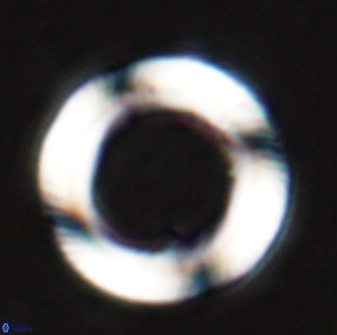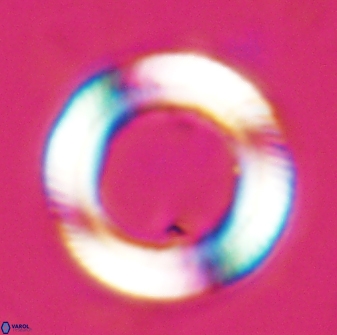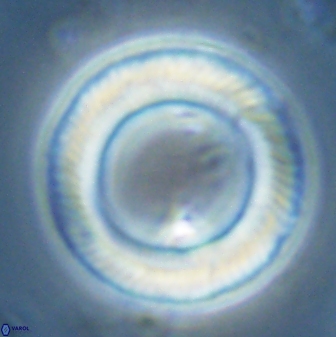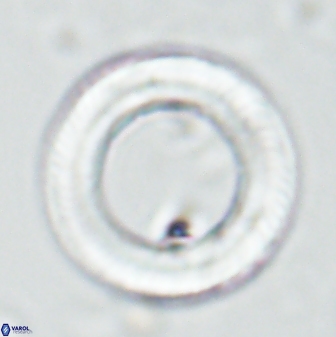Tonromeinia davidii

Tonromeinia davidii and Tonromeinia deniseae
Set number: 2359
-
1
-
2
-
3
-
4
10µm
Set number: 2352
-
1
-
2
-
3
-
4
10µm
Set number: 2351
-
1
-
2
-
3
-
4
-
5
-
6
-
7
-
8
10µm
Set number: 2342
-
1
-
2
-
3
-
4
10µm
Set number: 2343
-
1
-
2
-
3
-
4
10µm
Set number: 2344
-
1
-
2
-
3
-
4
10µm
Set number: 2345
-
1
-
2
-
3
-
4
-
5
-
6
-
7
-
8
-
9
-
10
-
11
-
12
10µm
Set number: 2346
-
1
-
2
-
3
-
4
-
5
-
6
-
7
-
8
-
9
-
10
-
11
-
12
10µm
Tonromeinia davidii Bowman & Varol, 2021
A large circular species of Tonromeinia consists of two discs and a low column of equal diameter and height/thickness. The diameter of the empty central opening without tube cycle appears twice (2x) greater than the width of the discs/column, and this diagnostic size ratio is an essential criterion that is used to correctly and consistently identify this species.
After David Varol, designer, programmer and maintainer of the Varol Research website, Leeds, United Kingdom.
Overall diameter (max): 11.38μm; Central Opening diameter: 6.02μm; Discs/Column diameter: 2.67μm.
Large (8.0–11.0μm) circular species of Tonromeinia constructed of two discs and a column of equal diameter and height/thickness. The low height-to-thickness ratio of the discs/columns produces a compressed appearance of the species. The specimen of Tonromeinia with a large circular opening that lacks a tube cycle exhibiting a diameter that is twice (2x) greater than the width of the discs/column is assigned to Tonromeinia davidii. The dominant settling position of this species is typically restricted to the plan-view, as the limited height of the column prevents sufficient mass distribution along the height axis.
In cross-polarised light, the extinction lines display a dextrogyre pattern in the distal side, whereas the proximal side exhibits laevogyre extinction lines. When applying for the gypsum plate, the equal orientation of the horizontal axis and blue area determines the distal side, and the vertical axis and blue section designate the proximal side. The discs/a column are birefringent in the side-view and the plan-views, generating whiteish birefringence in the plan-view and yellowish-brownish birefringence in the side-view. The diagnostic width ratio of the discs/central opening has been established for Tonromeinia, and applying these unique ratios allows Tonromeinia species to be appropriately differentiated.
Tonromeinia davidii represents a large species exhibiting a diameter of 8.0–11.0μm, whereas Tonromeinia deniseae is greater than 11.0μm. Tonromeinia davidii differs from Tonromeinia fatmae through the unique width ratio criteria representing the species (i.e. central opening diameter is at least 2x of the width of discs/column). The overall size of Tonromeinia davidii is 8.0–11.0μm, whereas that of Tonromeinia bilenii is less than 8.0μm.
Bowman, A. R. & Varol, O. 2021. A Taxonomic Revision of Heliolithaceae - Applications in Resolving the Problematic Calcareous Nannofossil Biostratigraphy of the Paleocene. In: M. Montenary, M. (Ed.). Calcareous nannofossil biostratigraphy of the Stratigraphy and timescales. 6: 43-223.



